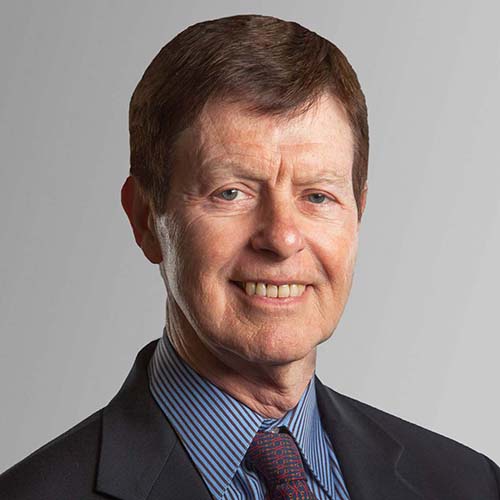Innovation is in the air, but what is it and what difference does it make?
The legal academy is giving increased attention to the question of the education needed to appropriately equip today’s students to serve the needs of clients, employers, and society at large. Schools are experimenting with a wide array of innovations. It is important to the larger enterprise of legal education to know what sorts of innovation are actually emerging, how they are working, and what might we learn from these experiments.
With this post, Educating Tomorrow’s Lawyers begins a series of reports on legal education: the what, who, and how of innovation. These reports will document the range of current innovations in the areas of curriculum, teaching and learning, faculty, and assessment. They will draw on a number of sources of data, including the American Bar Association/Law School Admissions Council (ABA/LSAC) Official Guide, but the primary source will be the results of Educating Tomorrow’s Lawyers’ new survey of innovations currently underway.
The survey’s purpose is to provide information not previously available about what is happening to reshape the experience of legal education. We sent the survey to the deans of all law schools in the U.S. and to Anglophone Canadian law schools. The survey asks schools to tell us about what has changed during the past decade in the areas of curriculum; the practices of teaching and learning; faculty development; professional identity formation; and assessment. The instrument also invites responding schools to tell us about innovations they think especially noteworthy or important. We intend to follow up as many of these reports from the deans as we can in order to document and publicize the many emerging new approaches to legal education. These posts are intended to provide an overview and interpretation of the results of the survey as they unfold. In subsequent posts we will draw on these responses to provide more detailed looks into topics of general interest within the broad areas mentioned above.
To date, the survey has received 73 replies, a response rate of 34%, which represents a strong level of response so far. At this preliminary stage, however, it is already clear that the ferment in many law schools has passed beyond the phase of discussion into active experimentation in the reshaping of the substance and experience of legal education. For instance, for those schools in our survey indicating a curricular initiative to increase their emphasis on lawyering and skills, 41% said they were more than half way to the full implementation of their plan and another 43% said their plan was already fully implemented. With regard to integrative approaches linking doctrine and practical experience, 32% said they were more than half way to the full implementation of their plan with another 45% at full implementation.
At this stage of our exploration, five areas of activity already stand out:
- In curriculum, there is interest in interdisciplinary teaching both within law schools and between law and other disciplines. A number of schools offer joint degrees (e.g., JD/PhD or JD/MBA) or interdisciplinary certificate programs. One school is actively encouraging its students to take classes outside of the law school as well as encouraging non-law students to take classes in the law school. Another is building into certain classes a perspective that emphasizes the social context in which law actually operates. Still others are including more international themes.
- In teaching and learning, there is evidence of integration into new or existing courses of simulated experiences of practice of various kinds as a part of teaching legal doctrine. One school has developed a program that replicates for the student the experience of being an associate in a law firm handling a wide variety of matters. Starting with the first year and continuing throughout the law school experience another school focuses on practice-oriented skills including law office management along with professional skills.
- In the first year, a number of new programs provide an integrated introduction to legal reasoning through experiences that use legal writing and research in conjunction with methods of practice simulation that include small teaching sections and new forms of assessment. For instance, one school has developed an entire first-year program that places students in collaborative groups that function like law offices and has them handle particular kinds of legal matters along with learning basic legal research and writing and exposure to issues of ethics and professional identity.
- In the second and third years, a number of schools now provide expanded opportunities for clinical-legal experience, including an expanded range of clinical subject areas. Of the schools responding to our survey so far, 82% report initiatives that have or are in the process of adding new clinics. The range of new clinics is quite broad and includes clinics that focus on transactional work as well as the more traditional litigation-based clinics. One particularly interesting transactional clinic works with small businesses and entrepreneurs particularly in small towns. It has the added benefit of students working in underserved rural areas. Other schools have started clinics that focus on the special needs of the elderly
- An additional phenomenon we find especially interesting is evidence from a number of schools of a comprehensive approach to innovation rather than just small-scale adjustments. Schools are looking at their programs holistically – not just the first year, for instance, but the entire curriculum along with faculty development and even assessment. One school recently adopted a first-ever mission statement for its curriculum and goals. It involves both the program itself (they are beginning with the first-year curriculum) and the pedagogical approaches used. In addition it includes a major investment in faculty development (among the interesting things they will be using are teaching rounds) and new guidelines for promotion, tenure, and evaluation that include teaching effectiveness. Such developments are not limited to so-called upper tier schools. Promising innovations are appearing across the law school spectrum. We should view these efforts as experiments from which we all can learn.
Future survey posts in this space will explore each of these areas in more detail, providing examples of courses and programs. They will also present resources which various schools are providing to enable faculty to enhance their teaching. Additional, later posts will present other findings concerning ways schools are using the resources of learning theory to enhance legal education, how schools are deepening the teaching of legal ethics and professionalism, and how schools are rethinking assessment in light of changing programs. We hope you will find these posts of interest and use in advancing the cause of legal education. Post Number Two will explore the curriculum in more detail.


